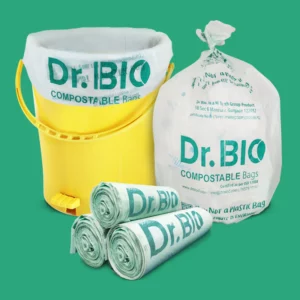
What is compostable Bags?
What is compostable Bags? Compostable bags are a type of biodegradable bag that is designed to break down into natural components when composted. They are
Compostable packaging can be a better option for the environment compared to traditional non-compostable packaging, but its overall environmental impact depends on various factors. Here are some considerations:

Biodegradability: Compostable packaging is designed to break down into natural components like water, carbon dioxide, and organic matter under specific composting conditions. If properly managed in a composting facility, it can degrade more quickly compared to traditional packaging materials like plastic, which can persist in the environment for hundreds of years.
Reduced waste: Compostable packaging can help reduce the amount of waste sent to landfills or incinerators. Instead, it can be diverted to composting facilities, where it can decompose and turn into nutrient-rich compost. This can contribute to a more circular economy by closing the loop on waste disposal.
Resource requirements: The production of compostable packaging often requires fewer fossil fuel-based resources compared to conventional plastic production. Compostable materials can be derived from renewable resources such as plant-based materials (e.g., cornstarch, sugarcane, or bamboo), reducing reliance on non-renewable resources.
Industrial composting infrastructure: For compostable packaging to have a positive environmental impact, it needs to be properly managed in an industrial composting facility. These facilities provide the necessary conditions (e.g., heat, moisture, oxygen) for the packaging to biodegrade efficiently. If compostable packaging ends up in landfills or isn’t processed correctly, it may not decompose effectively and can contribute to methane emissions.
Consumer education and infrastructure: Compostable packaging requires proper disposal by consumers. If it is mistakenly mixed with traditional recycling or landfill waste streams, it can contaminate recycling processes or contribute to general waste. Adequate consumer education and infrastructure for separate compostable waste collection are essential for maximizing the environmental benefits of compostable packaging.
Life cycle assessment: The overall environmental impact of packaging materials should consider their life cycle, including raw material extraction, manufacturing, transportation, use, and end-of-life disposal. Compostable packaging may have advantages in some stages, but it is crucial to assess the entire life cycle to fully understand its environmental implications.
In summary, compostable packaging has the potential to be environmentally beneficial, particularly when properly managed in industrial composting systems.

What is compostable Bags? Compostable bags are a type of biodegradable bag that is designed to break down into natural components when composted. They are

Is compostable packaging good for environment Compostable packaging can be a better option for the environment compared to traditional non-compostable packaging, but its overall environmental

Laundry Bags Case Study This case study focuses on a dry cleaner who previously used approximately 1 million plastic bags per month for packaging clothes.